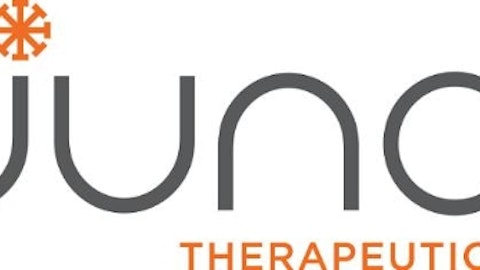Stemline Therapeutics Inc (NASDAQ:STML) is one of the biggest stories in the biotechnology space this week. The company has fallen foul of accusations that it held back pertinent information from buyers ahead of an equity issue, and has taken a hit as a result.
There’s two sides to every story, however, and there’s a chance that the negative side of this one – the one that is weighing on sentiment – is being disproportionately focused upon; it’s more sensational, after all, and that drives reader interest.
But what about the other point of view? Is there a chance that the news has driven an overreaction, and in turn, an opportunity to get in to the company at a discount on an oversell?

Pressmaster/Shutterstock.com
Maybe.
So, the company has issued a rebuttal to the accusations, and we’ll get to that shortly. First up, let’s catch new readers up with what’s going on.
Stemline Therapeutics Inc (NASDAQ:STML) is developing a drug called SL-401 for the treatment of a condition called blastic plasmacytoid dendritic cell neoplasm (BPDCN). The condition is a rare disease of the bone marrow and blood that affects multiple organs, including the lymph nodes and the skin. It often presents as leukemia or evolves into acute leukemia. Blastic is another word for a type of immature, plasmacytoid dendritic cell. The neoplasm element of the name refers to the cancer itself. Around 75-90% of cases occur in men, making it sort of anomalous for a leukemia type cancer (which are generally a pretty even split), and right now, there’s basically no treatment. Chemotherapy is an option, but even in the best of outcomes, most patients survive for only 10 to 14 months after diagnosis.
So, the drug is currently in phase II studies, and the phase II in question is the root of the current situation. Basically, the company found out that a patient had died from a condition called capillary leak syndrome (CLS). This is a rare condition characterized by self-reversing episodes during which the endothelial cells (which are the cells that line the capillaries) are thought to separate for a few days. This separation allows for the leaking of fluid from the circulatory system to the interstitial space, which in turn, results in a dangerous degree of low blood pressure.
Stemline Therapeutics Inc (NASDAQ:STML) didn’t report its discovery of this patient’s death to the public, and went ahead with an offering a day later. That’s not great, of course. There are lawsuits circling as we speak, so it’s not wise of us to say one way or the other what the company should have done (neither we nor the other leading financial outlets have all of the information), but it’s reasonable to say that the information could have impacted the decisions of a portion of those investors that took part in the offering.
Whatever the ethical, legal or otherwise situation, it really comes own to one thing –does this death warrant a close to 50% collapse in company valuation?
We think, perhaps not.
CLS has long been reported as a potential side effect of this drug, and a couple of patients have died as a result of the condition (patients that took this drug) over the last couple of years. Stemline has altered its dosing and admin regimen to try and overcome the potential for CLS induction, but as the latest death shows, it hasn’t worked as well as the company might have hoped.
Now, it’s all about the toss up between safety and efficacy. In a dose finder trial, one out of fifteen patients dies due to drug induced CLS. The company implemented some changes, and in the current trial, 50 patients are thought to have been enrolled. With this death, that’s one out of 50.
A company never wants to see patients die as a result of its treatment but when the FDA takes this one under consideration, the fact that most of these patients die in a little over a year has to factor in to the agency’s decision. Especially because the drug seems to work very very well. In the phase II to date, SL-401 has demonstrated robust overall tumor response rates of 84%, including 56% complete or near-complete response. That’s excellent efficacy data.
So, bottom line?
Patient deaths are basically the worst thing that can happen for a company putting a drug through a clinical trial, and three in one trial is not good – there’s no getting around that. In such a serious indication, however, and one with no effective treatment options, it is far from a death knell. If the company can persuade the FDA to let it continue on its way with this study, there could be a strong near-term recovery on the cards.
Follow Stemline Therapeutics Inc (NASDAQ:STML)
Follow Stemline Therapeutics Inc (NASDAQ:STML)
Receive real-time insider trading and news alerts
Note: This article is written by Mark Collins and originally published at Market Exclusive.





